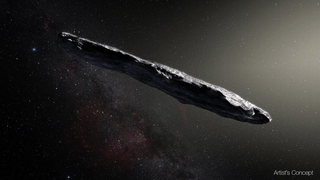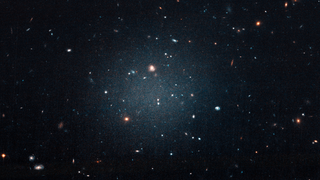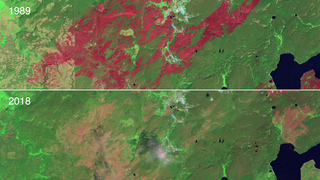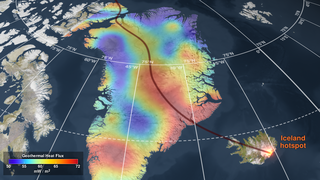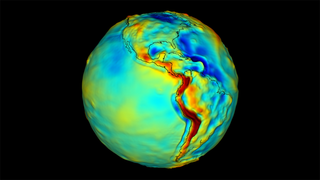Universe
ID: 11080
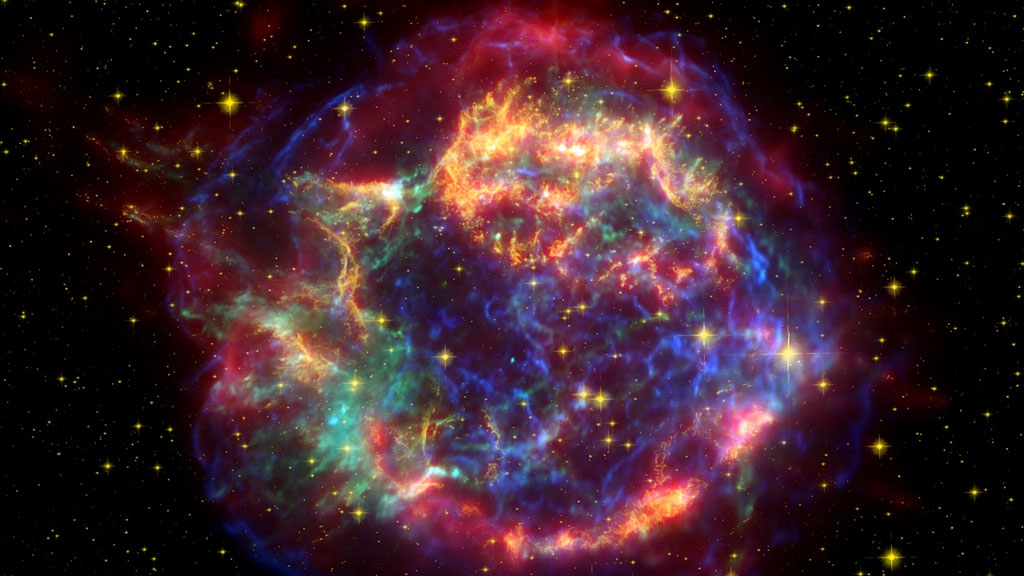
What happens when a star explodes? Astronomers sorting through pieces of a star that burst about 330 years ago discovered it might have blown up from the inside out. Data from ground-based observatories and NASA's Chandra and Spitzer space telescopes reveal material forged deep inside the star, such as iron, was on the outer edge of the explosion. The blast, called a supernova, takes place when a massive star runs out of fuel and collapses under its own gravity. This process ignites a runaway nuclear reaction that can outshine a hundred billion suns. The explosion, meanwhile, can launch elements into space—including those found in the star's core—that give rise to new stars, planets and even life. Watch the video to see how astronomers pieced together the inside-out nature of the explosion by mapping the trail of elements it left behind.
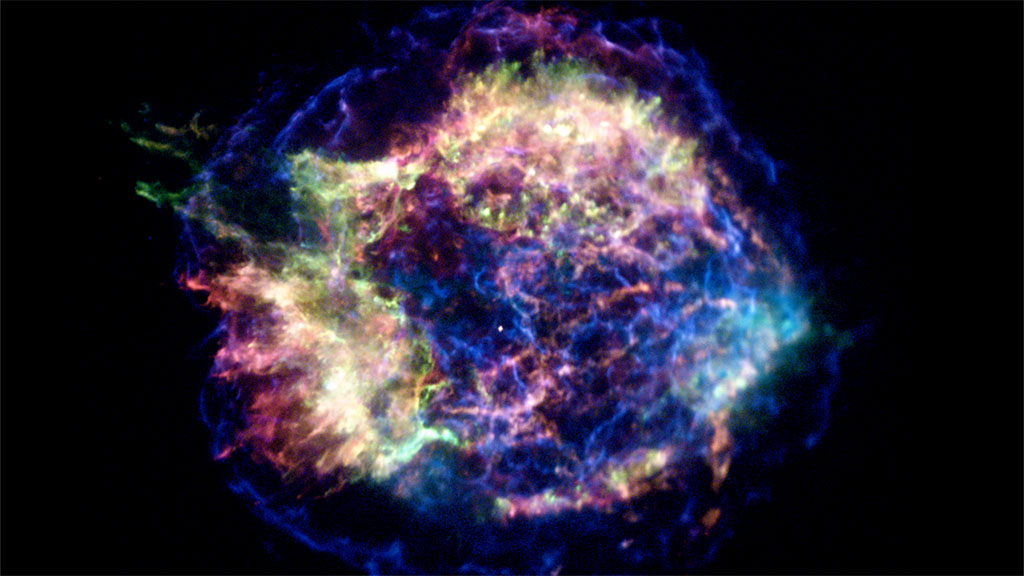
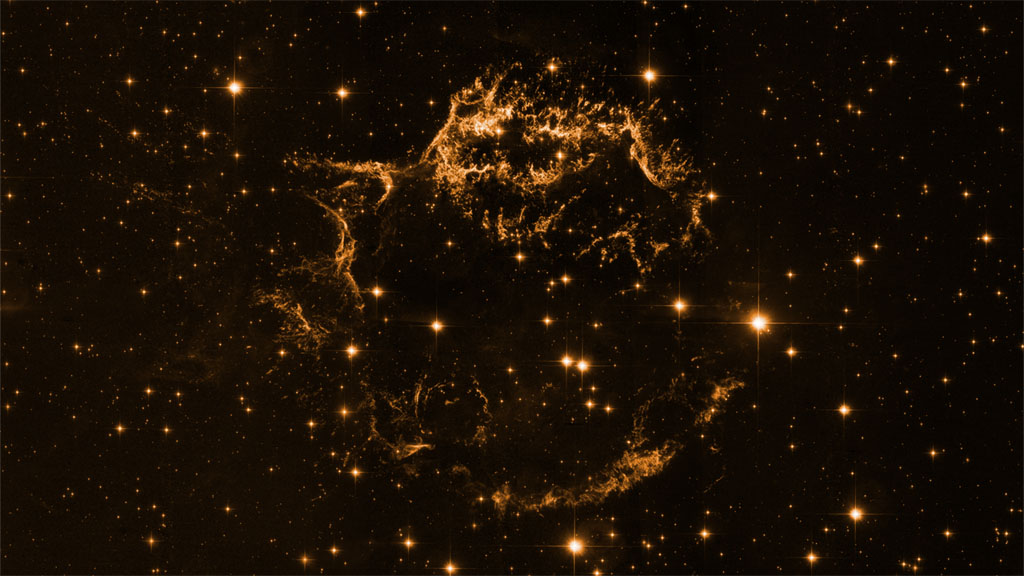
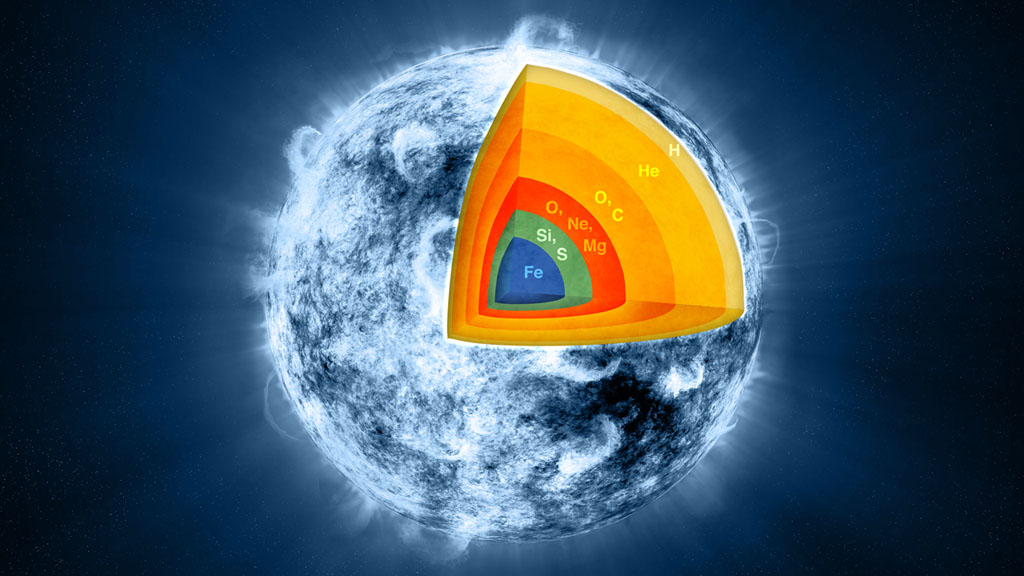
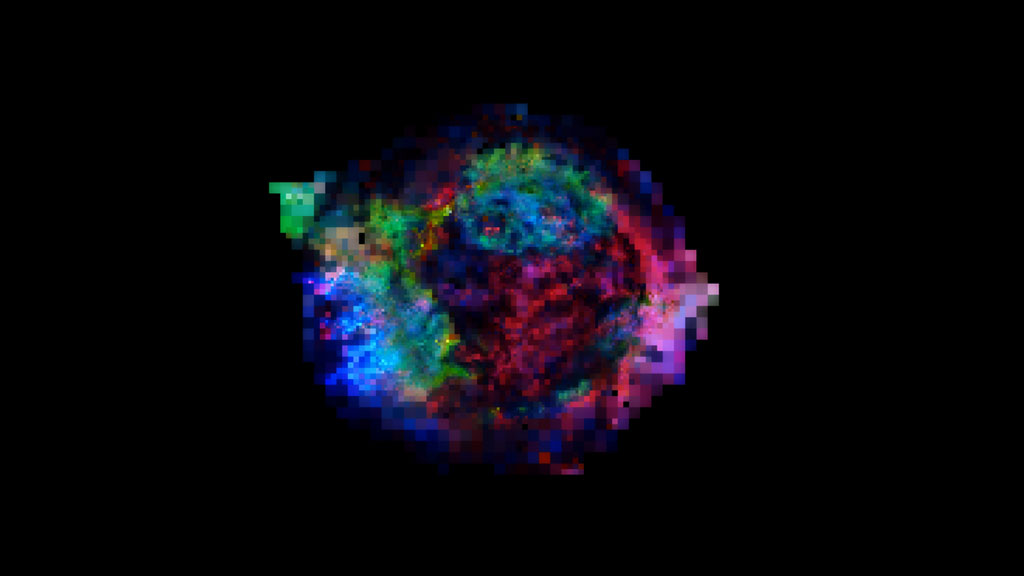
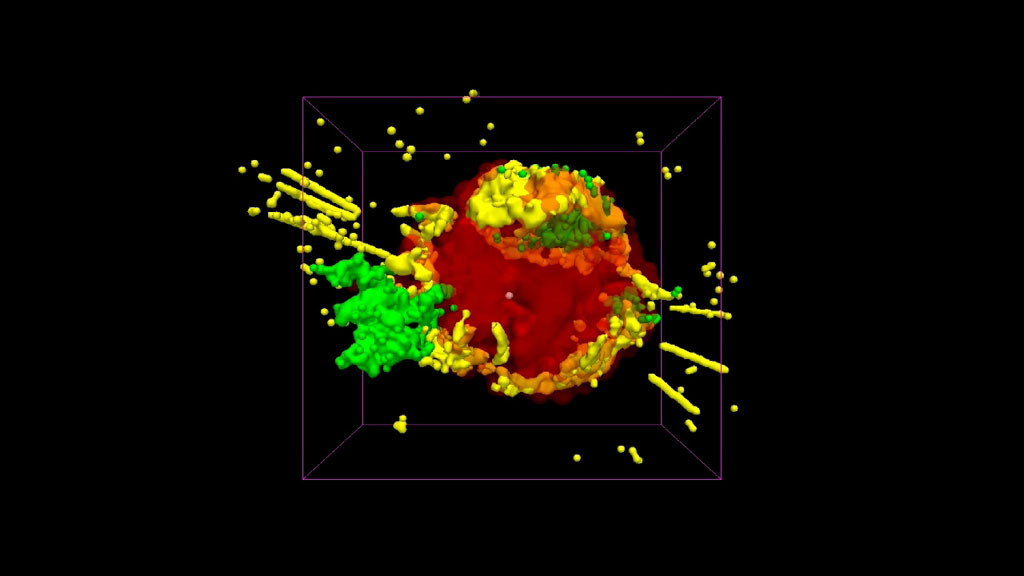
Inside Out






Story Credits
Please give credit for this item to:
Science@NASA and NASA Goddard Space Flight Center
Image of Cassiopeia A in many colors courtesy of X-ray: NASA/CXC/SAO; Optical: NASA/STScl; Infrared: NASA/JPL-Caltech/Steward/O.Krause et al.
3D Fly-Through of Cassiopeia A visualization courtesy of NASA/CXC/D. Berry; Model: NASA/CXC/MIT/T. Delaney et al.
Chandra X-Ray image of Cassiopeia A courtesy of NASA/CXC/UNAM/Ioffe/D.Page, P. Shternin et al.
Chandra Optical image of Cassiopeia A from Hubble courtesy of NASA/STScI
Illustration of distribution of elements courtesy of NASA/CXC/M. Weiss
Chandra X-Ray element map courtesy of NASA/CXC/GSFC/U. Hwang & J. Laming
3D Visualization still image of Cassiopeia A courtesy of NASA/CXC/MIT/T.Delaney et al.
Science@NASA and NASA Goddard Space Flight Center
Image of Cassiopeia A in many colors courtesy of X-ray: NASA/CXC/SAO; Optical: NASA/STScl; Infrared: NASA/JPL-Caltech/Steward/O.Krause et al.
3D Fly-Through of Cassiopeia A visualization courtesy of NASA/CXC/D. Berry; Model: NASA/CXC/MIT/T. Delaney et al.
Chandra X-Ray image of Cassiopeia A courtesy of NASA/CXC/UNAM/Ioffe/D.Page, P. Shternin et al.
Chandra Optical image of Cassiopeia A from Hubble courtesy of NASA/STScI
Illustration of distribution of elements courtesy of NASA/CXC/M. Weiss
Chandra X-Ray element map courtesy of NASA/CXC/GSFC/U. Hwang & J. Laming
3D Visualization still image of Cassiopeia A courtesy of NASA/CXC/MIT/T.Delaney et al.
Short URL to share this page:
https://svs.gsfc.nasa.gov/11080
Keywords:
SVS >> App
NASA Science >> Universe
https://svs.gsfc.nasa.gov/11080
Keywords:
SVS >> App
NASA Science >> Universe

